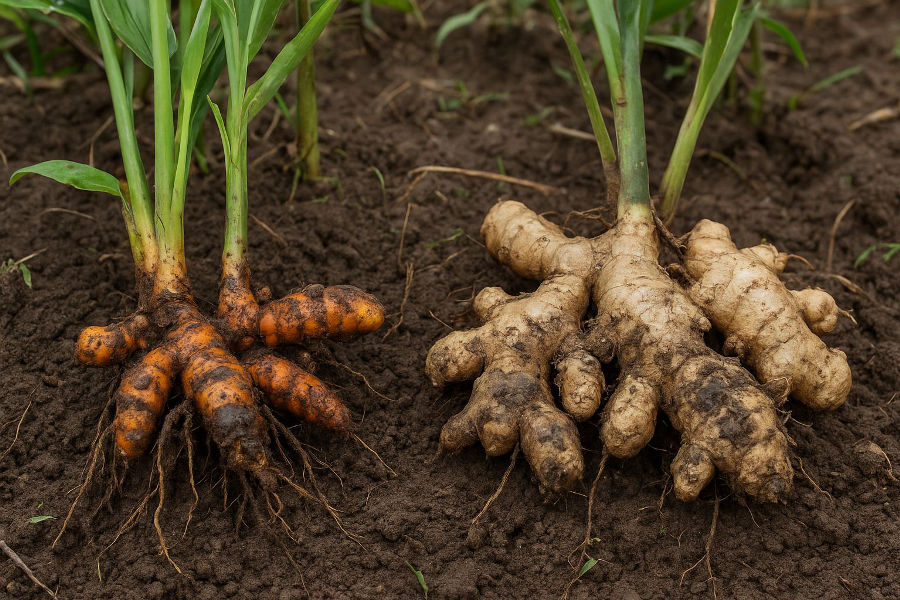Rhizome Rot in Turmeric and Ginger
Turmeric and ginger are high-value crops, but rhizome rot can reduce yield and income if not managed properly. This disease mainly affects the underground part of the plant—the rhizome—and is caused by soil-borne fungi like Pythium spp., Fusarium spp., and Rhizoctonia solani.
Symptoms Farmers Should Watch For:
-
Yellowing and wilting of leaves.
-
Soft, water-soaked rhizomes with a foul smell.
-
Stunted growth of the plant.
-
Dark patches on rhizomes when cut open.
Major Causes:
-
Waterlogged or poorly drained fields.
-
Using infected rhizomes for planting.
-
Continuous cultivation of turmeric or ginger in the same field.
-
Humid conditions and heavy rainfall.
Practical Management Steps:
-
Use Healthy Planting Material:
-
Always select firm, disease-free rhizomes.
-
Avoid cracked or soft rhizomes.
-
-
Soil Treatment Before Planting:
-
Treat soil with Trichoderma or fungicides like Carbendazim or Mancozeb.
-
Ensure proper soil aeration.
-
-
Proper Spacing and Drainage:
-
Maintain 30–45 cm spacing between plants.
-
Avoid water stagnation; raised beds work well.
-
-
Crop Rotation:
-
Rotate with non-host crops like cereals or legumes to reduce fungal buildup.
-
-
Fungicidal Treatment of Rhizomes:
-
Dip rhizomes in 0.1% Carbendazim or Mancozeb solution before planting.
-
-
Field Hygiene:
-
Remove and destroy infected rhizomes immediately.
-
Avoid leaving plant debris in the field as it harbors fungi.
-
